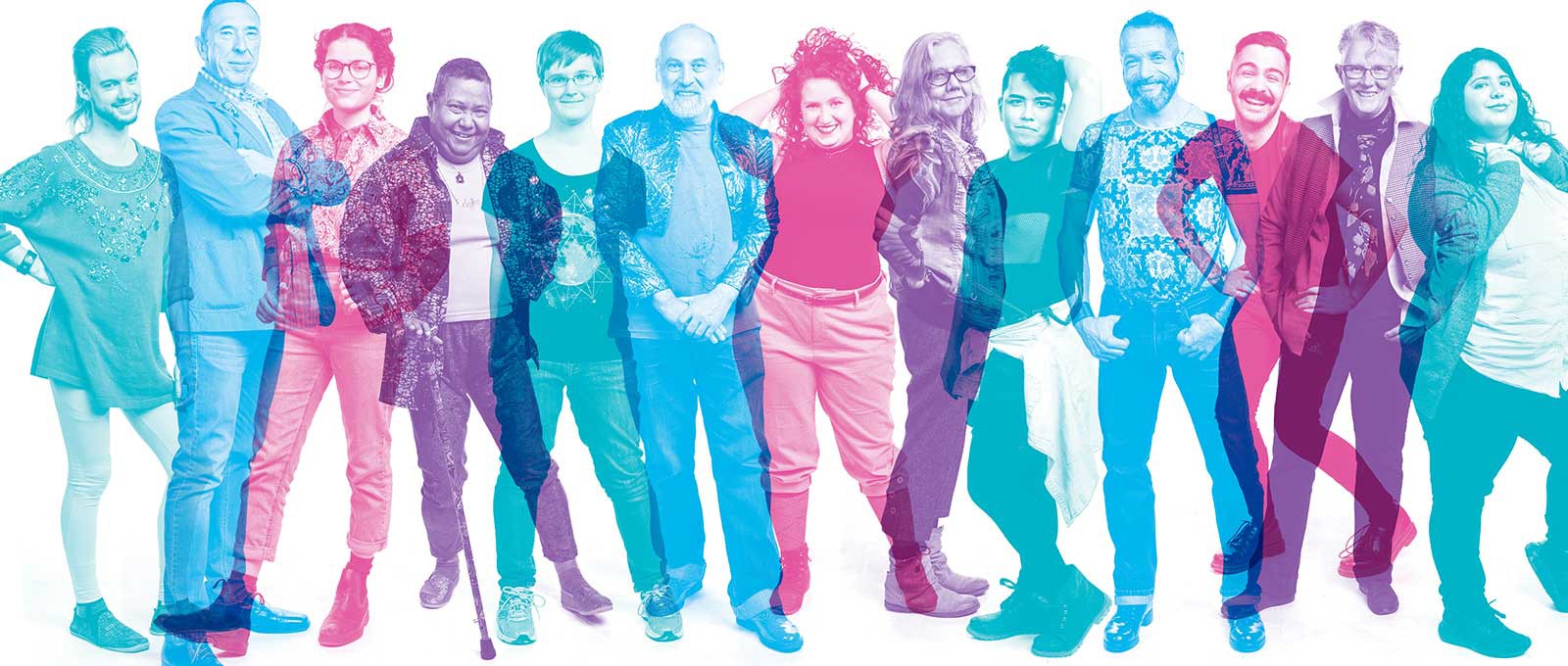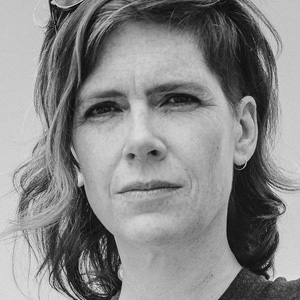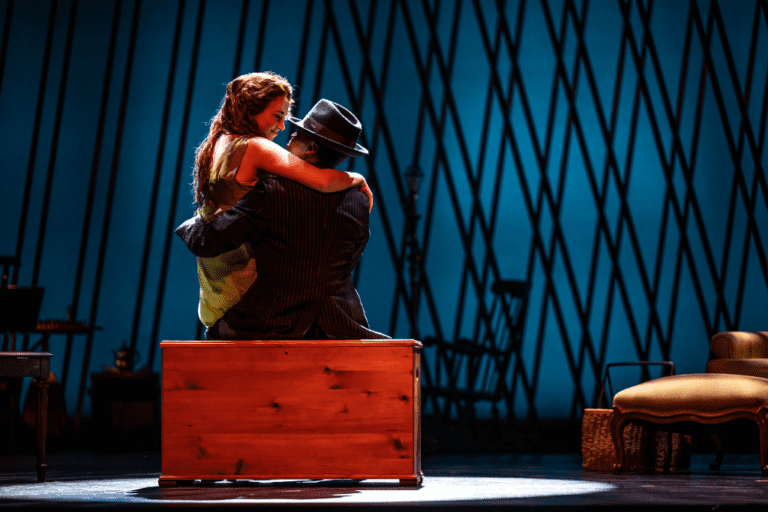Queer Culture’s Generation Gap
The generation gap in queer culture has never been more pronounced than it is right now. We live in a time of such profound and unprecedented cultural change in the social acceptance of queer and trans lives. People coming out in Canada today are coming out into a different world than previous generations.
Unlike a family of origin, where parents, grandparents, and siblings create intergenerational networks, queer culture is not something into which most of us are born. We have to seek it out. As LGBTQ2S people, we come into our sexual and/or gender identities at many different ages and stages of life, and when we do, we often gravitate toward friends and lovers who reflect our reality and experience. So, queer culture tends to be peer culture. But while finding a queer peer group isn’t so hard these days, especially for young people in a big urban centre, and while creative and arts-based programs for queer youth proliferate in our city, very few intergenerational spaces exist in the community.
Over the last decade, a highlight of Buddies in Bad Times’ Queer Youth Arts Program was the annual Speed History event, where older queer artists and activists were invited to meet and be interviewed by our youth. It was always electric. Every year, participants on both ends of the age spectrum would express how meaningful, and how unique, it was to have this kind of intergenerational exchange.
The Youth/Elders Project (YEP) was born out of a desire to dig deeper into this. It started as a series of weekly workshops for queer- and trans-identified people under the age of twenty-five and over the age of fifty-five to meet and dialogue. It’s a living experiment in form, content, theatre practice, community building, and creating space. We’ve used theatre and storytelling to forge real relationships between the two generations, to document queer narratives and lived experiences at this unique moment in history, and to build community.

The Youth/Elders Project (Rhubarb Festival). Photo by
Greg Wong
There are many books, films, podcasts, and documentaries created by and about folks who’ve made and impacted queer history, so why not just engage with these documents that already exist? Or why not make something more tangible, more permanent, than theatre?
YEP is less about preserving narratives, in a museum sense, and more about exchanging narratives, in order to create something new together. It has been an exercise in learning to work across differences of age (from eighteen to seventy-three), culture, gender, and identity, which are the significant generational differences in terms of lived experience, vocabulary, and even modes of communication. It’s given us insight into some of the most profound issues the queer community is wrestling with today—inclusion, identity, erasure, allyship, invisibility, privilege, and vocabulary.
We have spent a lot of time talking about “making room”: looking at our own patterns of taking space or not taking space in a group setting and experimenting with pushing ourselves out of our usual patterns. The Long Table, a theatrical tool created by lesbian performance innovator Lois Weaver, has been used as a framework for robust group discussions, simultaneously allowing us to observe and examine the patterns and dynamics that emerge inside the conversation. At the Long Table, the group sits encircling, but not at, a table, which is set with a certain number of chairs—we use six for our group of thirteen. A question is posed, which is used as the jumping-off point for discussion. Participants who wish to join the conversation take a seat at the table. You can only speak when you are at the table, anyone can come to or leave the table at any time, and if there isn’t a free seat, you can request one.
The wide-ranging conversations that have ensued—starting from prompts like: “What does queer need now?,” “How can we talk about sex in this space (without it feeling creepy)?,” “When do you feel like an insider? An outsider?,” or “What is invisible in the room, what HAVEN’T we been talking about?”—have been heated, personal, intense, funny, and fascinating.
We’ve questioned “safe spaces” and discussed the impossibility of them, even when there’s a desire for them. We’ve looked at the challenges of being accountable and of sitting with discomfort. We’ve discussed elders feeling invisible and unappreciated for the struggles they went through so that young people could have the freedoms they enjoy, and elders feeling afraid that young people will mistake their enthusiasm for connection as a sexual come-on. We’ve discussed youth who, steeped in an intersectional analysis of gender, race, class, and culture, employ a very different lens and vocabulary than some elders who came up in a much more monocultural experience of queer identity, and we’ve discussed youth who become frustrated by elders who don’t “get” or seem to respect their preferred pronouns. We’ve looked at QTBIPOC (Queer, Trans, Black, Indigenous, People of Colour) feeling underrepresented, erased; white gay men feeling threatened; politeness vs. rage.

The Youth/Elders Project (Rhubarb Festival). Photo by
Greg Wong
Every time we engage the Long Table, we spend almost an equal amount of time afterwards analyzing what was said, what wasn’t said, who spoke, who didn’t speak, what patterns emerged, and how they reveal us to ourselves. We’ve observed our own politeness: people not actually expressing their real frustration or unease about something that gets said until after the table is over. We’ve noticed how some people come to the table to drop their “truth bomb” and then go, leaving the others to pick up the pieces. We’ve observed how factors of social location—gender, race, class—seemed to dictate who came to the table, who would speak the longest, who never came without invitation. There’s been the occasional revelation, like the time when, in the middle of a session, someone said, “Okay, let’s talk about privilege” and all the white people left the table, leaving only the people of colour to discuss. We try to honestly observe ourselves without judgement—and with some humour and humility—and use these observations as directives for the next conversation.
The exchange is never dull. There is unending discussion and argument about labels and the words we choose to describe ourselves, and our sexual and gender identities. While all of the youth, and some of the elders, embrace “queer” as a word and a concept that describes them, some of the elders find it a frustrating word, one they feel erases them and their chosen identities. We did an activity over a couple of sessions wherein the elders taught the youth “lost arts” from their upbringing (which included everything from telephone etiquette, sock darning, and learning to curtsy); the youth taught the elders how to use different technology ranging from Grindr to Snapchat to Bunz Trading Zone. There is frank discussion over dating, partners, and lovers, or lack thereof. The group loves to talk about sex, and sex has been a super interesting, rich, funny, and vulnerable topic that has held lots of surprises for both age groups. Over the course of the project, our oldest participant, inspired by one of our youngest participants, has come out as gender non-binary.
YEP is a performance, and performance is always an ephemeral document; it lives and dies each night on the stage. When it’s good, a performance imprints itself on both the performer and the audience. There is a vital component of witnessing, and those who attend are part of the document. It’s my hope that the conversations started inside this project will get taken up and carried on outside the theatre, that YEP can be a model for how to create more space for community building across difference, and that it will lead to more meaningful intergenerational exchange.
The Youth/Elders Project is on at Buddies in Bad Times until June 4.
For tickets or more information, click here








Comments